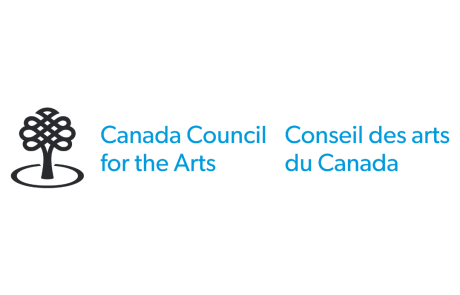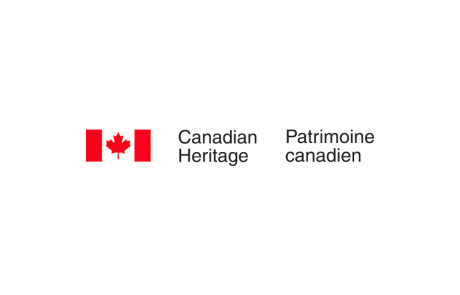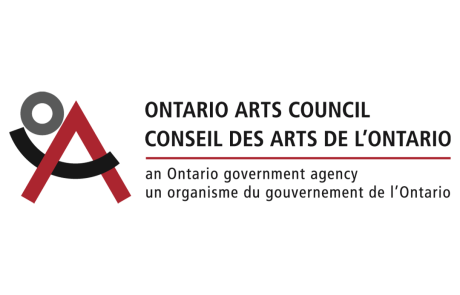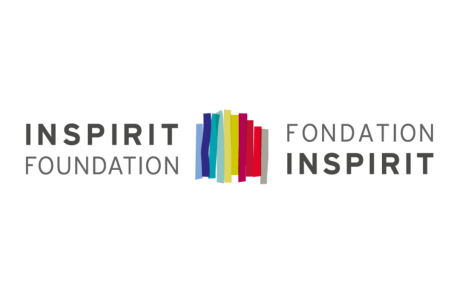Decolonizing Territory: The Rite of Memorializing Space
by Cesar Alejandro Romero
The Story
The land where a city is built holds the memory of many stories. With an intentional look at the surroundings, those tales slowly start to fill the landscape. To some they were always apparent. A city will tell stories about the people, the way they interact, what is important to them but also it is a very powerful way to mark the space. Public art as part of a larger group of urban narratives is also a territorial testament of contemporary Indigenous anecdotes and if commissioned properly a way to dismount the colonized space.
The Challenges
Public art programs have many definitions and many points of entry depending on what field of work you relate to and your own aesthetic values, where the program is managed within institutions, and the focus of the related public policies Public art is an object that represents or tells a story, a narrative of communities, the ideologies and the identity of a city is reflected on it. What stories are told? Who tells those stories? Who selected the stories, those narratives and which lenses were used to be told? Art historian Rosalyn Deutsche describes it better than anyone:
“even the most ingenious accounts of public art agree: public space is inextricably linked to democratic ideals. When, for instance, arts administrators and city officials formulate criteria for placing ‘art in public places,’ they routinely employ a vocabulary that invokes, albeit loosely, the tenets of both direct and representative democracy: Are the artworks for ‘the people?’ Do they encourage ‘participation?’ Do they serve their constituencies? […] Do the works relinquish ‘elitism?’ Are they accessible?” (Art and Public Space: Questions of Democracy Rosalyn Deutsche).
The art projects and the artists at times are just only two small components in the overall ideology of the concept, mare instruments to at times colonial narratives. If we take a look at most national programs, we most aim to understand the organization and the people around the commissioning of the work. A successful public art program is not meant to decorate the urban landscape as many of the programs are held in urbanized areas today. Politicians understand the power of public art and within the system in which it is created; we can only look at it within the lens of a colonized space as public art is a tool to decolonize a territory and the land in which it stands.
The size and personality of a city and its population matter, looking up to the big budget, larger iconic city, signature work from international artists most serve only as inspiration but not as an intent to place the projects in that context, Saskatoon is not a big city, it is a mid-size city, located on Treaty 6 Territory and the Homeland of the Métis Nation with its own identity and those narratives needs to surface in the work. If it is a private donor, and wants to partner to commission work it is fantastic, however in those instances usually the colonial lens and the bureaucratic process will result in a work that won’t reflect its community unless it is within the community lens where the work comes from.
I researched, commissioned, managed, curated and maintained the Public Art program in the City of Saskatoon for twelve years. In those years I noticed the flaws of the program, the policies, and the lens from which the art was contextualized. I learned about each piece and became very familiar with each one of them, it has been a very intimate relationship. The collection grew significantly with the new policy and it provided opportunities to amend some wrongs. The new policy coincided with the release of the Truth and Reconciliation Commission of Canada (TRC Commission). testimonials and many social and Indigenous movements, including the Idle No More Movement, which was started by Jessica Gordon, Sylvia McAdam, Sheelah McLean, and Nina Wilson, who are all from Saskatchewan. Arguably these two movements raised the consciousness of Canadians significantly to the ongoing process of colonization that is faced by Indigenous peoples in this country both systemically and interpersonally. ThePublic Art program in Saskatoon needed to reflect that. Representation of Indigenous art and artists within civic collections was minimal, however, it is slowly changing, the process is one very colonial as it is within a colonial system. Indigenous peoples have a strong relationship with their territories and the space where they live, their culture is filled with infinite symbology and stories that teaches, educates, leads, and memorializes those interactions.
The Process
The Process (a ritual to represent narratives) to commission work needs to be understood properly, art just doesn’t show up magically in the city. All public art is colonial as the concept itself is, unless the intention is to provide the space and facilitate the process for communities to tell their stories.
National organizations like CARFAC, Indigenous Protocols, and The Creative City Network of Canada (CCNC) are innovators in Canada and are collaborating in the creation of indigenous protocols for public art, and tool kits, previously nonexistent, and it is within the intention to support the notion of economic sustainability to underpaid artists as well as setting some protocols when working with Indigenous people and visual artists in public art. For more information you can search the following link: https://www.carfac.ca/news/2023/11/16/carfac-announces-launch-of-a-public-art-consultation/ .
The Projects
Other concepts like co-creation, collaboration, and space as a ceremonial place, invitational, accessible and inclusive but sacred, are not discussed here, however, it is important to mention it, as in Indigenous minds anything related to the land is sacred and were not even discussed in the earlier process of commissioned work. It is imperative to understand the colonial ideology behind the commissioning process, and how it leaves behind important beliefs and worldviews; with that lens we can browse the collection of public art in Saskatoon to better understand the land and the infrastructure in which the art is created.
It is all about relationships, and we can’t forget the artist’s vision, community participation in the process as well as intellectual and academic components to each project. There are many optics and lenses in which we can direct our perspective, but I will focus on the five works I believe demonstrate that effort to shift the narratives of colonization.
For this short curated independent testimonial, I will focus on the relevant samples of work from the City of Saskatoon collection that showcases some of the local stories and its significance.
The Spirit of Alliance
Donation from the Whitecap Dakota First Nation to the people of Saskatoon to remind us of their contributions to the territory since their participation in the War of 1812.. There is an important timeline in the ground that references past, present and future. The work itself is a testament of great collaboration as it incorporates the interpretation of a Blackfoot artist, and settlers from British and French ancestry.
Artists: Adrian Stimson, Ian Groove, Jean Sebastian Gauthier
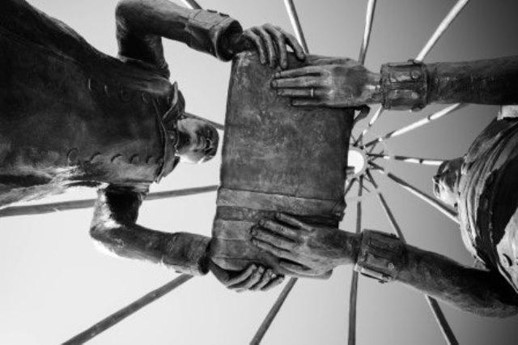
Photography: Alejandro Romero
Land of Berries: ᒥᓵᐢᑲᐧᑑᒥᐣ misâskwatômin
Artists: Tony Stallard in collaboration with Curator Lori Blondeau and former Tribe artists Joi Arcand, Joseph Naytowhow, and Kenneth T. Williams
As you can find in the artist Statement:
”The main intention of Land of Berries is to develop a work that would be relevant to the location, be thought provoking and to celebrate the local community, First Nations group, within a contemporary format that in time becomes a landmark that inspires civic pride”; the syllabic nêhiyawêwin (Plains Cree language) neon is a statement of bringing light to the land, a torch red like warm fire in the coldwinter, it is the first testament of “Indigenous territorial landmark and decolonization of space as brilliantly” Lori Blondeau once said.
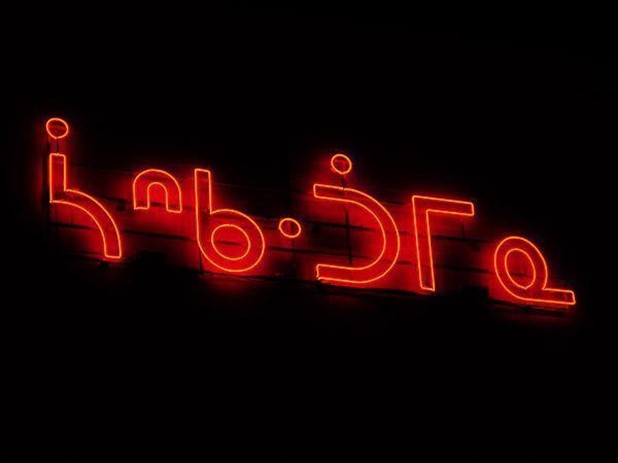
Photography: Alejandro Romero
The coming spring: Reconcilliation Circle in Victoria Park
Artist: Gordon Reeve
Explained by the artist, “the 27-foot-tall arch and two spires are constructed entirely of stainless steel that reflects the sun and moon. The longer 47-foot spire, pointing north, symbolically represents the First Nations’ long history. The 39-foot spire, pointing south, symbolically represents the history of the Métis Nation. Suspended high on each spire are moving chimes. The rustling and bell-like sounds the chimes make suggest the voices of children heard at a distance, representing the children taken by the residential system from all of the communities in Treaty Six Territory”. Commissioned by the Office of the Treaty Commissioner (STC) as a commemoration for Canada 150. Public art is a social rite and it promotes an activity to memorialize culture and the opportunity to shift a narrative and impact community. This project brought communities together and helped surface truths that needed to come forward. The artwork frames the renamed space as the reconciliation circle where the annual event for National Indigenous Peoples Day occurs each year.
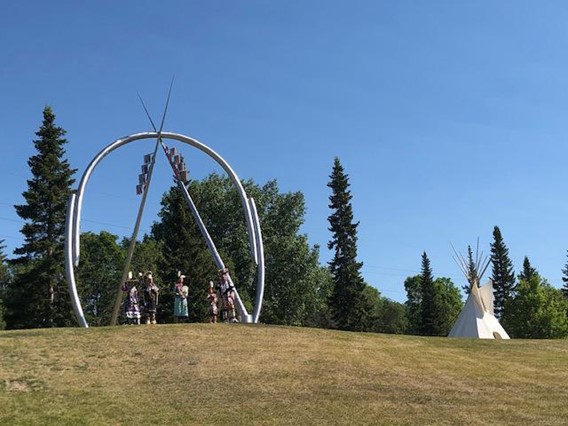
Photography: Alejandro Romero
“Wicanhi Duta Win” or “Red Star Woman”: Station 76 25th Street East
Artist: Lionel Peyachew
The sculpture of a woman dancing on a cloud, was inspired by Amber Redman, a young woman from the Standing Buffalo Dakota First Nation who was murdered. . The site is unique as it can be perceived as a political place, with this monument artwork the hope is to serve as a beacon to all residents of Saskatoon, to never forget those who have been a victim of violent crime specially tomissing and murdered Indigenous women, girls, two-spirit people, and gender diverse relatives This work is in front of the main Saskatoon Police Service building where the Sisters in Spirit vigil is held every year. The relevance of this work is its location, the story that inspired it and the process of direct selection of an Indigenous sculptor by the community.
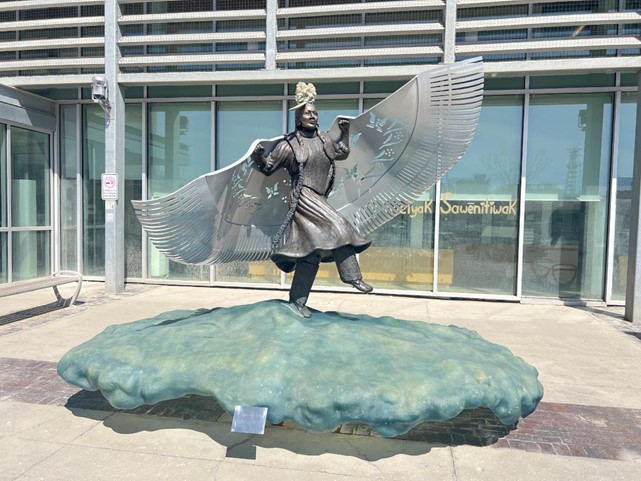
Photography: Alejandro Romero
Survivors Circle (Bus shelter) East of 895 Confederation Drive
Artist: Justine “Tini” Stilborn
This bus shelter was unique as it was created by an indigenous artist from a different territory. A name list of Indigenous artists was submitted to the city team and to the elders and Justine was selected. An indigenous woman from Treaty 4 Territory contributed to the design process after listening to the stories from the elders and community. The result was impressive, a set of four metal panels which represent important Canadian colonial narratives about the Sixties Scoop depicting young Indigenous children being taken from their homes and families, Indigenous children’s involuntary assimilation to euro-western culture as their long hair was clipped, shoes representing unmarked graves of missing children during the residential schools period and as a hopeful image the interior of the bus shelter the face of a child i the clouds. In addition to the pictorial narratives the artist used different colours to create mood and also to add symbolic meaning to the work; as the artists and elders collaborated on the project they determined the meaning of the colour red: to convey the stereotyped red skin tone referred to as Indigenous people and also as a reference to the bloodshed and pain experienced; the colour orange was used to align with orange shirt day and the EveryChildMatters movement; the yellow panel represents hope and joy. The bus shelter represents the home and people are invited to come into the shelter to experience the narratives in an intimate manner so they can reflect on those stories. The project process was an example for future collaborations, it was successful in terms of connecting community, artists and elders; the City was the neutral ground for this, facilitating meaningful dialogue between all the stakeholders, a process that was repeated in the following bus shelter.
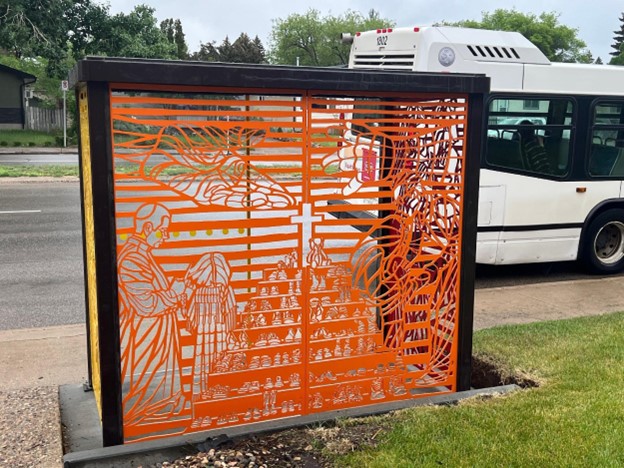
Photography: Alejandro Romero
Closing Remarks
The stories are told, the materials that give life to the ideas and what is the significance of each work matters. Examples of Indigenous artwork in mainstream exhibitions are still a novelty in Contemporary practices. The correction of the wrongs is not the only celebration to notice, it is also the celebration of Indigenous work made by Indigenous artists and indigenous content made by non-Indigenous artists as a way to show the differences and connections within engaged contexts. The process and protocols in which these projects contextualize the integration of narratives and communities is an aggregate value to the work.
I would like to end this essay with a few questions for my colleagues and readers: Do these works of art represent the ideas of freedom, democracy and social justice from non-dominant cultures? What would your response bewhen you interact with these objects? How important is it to present the narratives of the artwork to the public or should aspects of the art be for Indigenous audiences only? And how is the sculptural artwork is contextualized within a collection? Public art communicates stories, since it is placed in various visible public locations. It can function as public long-term propaganda, enabling the communication of particular ideas. The artwork is powerful when the intent is to communicate societal beliefs, and the documentation of people’s everyday life. It is a collective memory after all and we are all participating and co-creating it. It is important to give opportunities to Indigenous peoples from a specific territory to create public art on their own land. Monuments and memorials thus serve as permanent, public, visual markers of memory as it occurs within the community, on Indigenous territory. Within the context of contemporary art, public space and the different ritualistic art practices, public art has a prominent presence and must continue to evolve in order to communicate the cultures of Indigenous peoples who have been living and making art on these lands since time immemorial.
Link to city of public art https://storymaps.arcgis.com/stories/531ae814f21f4f789d8d79d66853205a
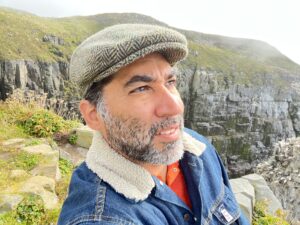 Alejandro Romero is an independent visual and interdisciplinary artist, curator and consultant in Arts and Culture. His leadership as an arts administrator includes the renovation of an old theatre, public performances, lectures, and public speaking. In Puerto Rico, as a young artist, he won awards for his sculptural and illustration work. In Saskatoon, Saskatchewan, Canada, he was Artist in Residence for the Cultural Capitals Project 2006 – 2007, at King George Community School in 2007- 2008, Green Olive Arts in residency in Morocco and was a curated artist for the international Holzart XXV Public Art symposium. His work explore anonymous interventions, social activism, cultural resistance, photography, painting, and poetry with the concepts of identity, migration, post-colonialism, prophecy, construction, and perceptions of reality. Alejandro is a full-time Artist, facilitator, art administrator, and instructor. Alejandro exhibits in Puerto Rico, USA and Canada. Some of his works are in private collections in Bolivia, Canada, China, Colombia, Dominican Republic, Germany, Mexico, Morocco, Puerto Rico, Spain, and the United States. Many of his photographic work has been published in different newspapers and magazines. He is also the former Public Arts Consultant for the city of Saskatoon, Past-President of CARFAC Saskatchewan, current treasurer of CARFAC National, and a former member of the board of directors of Creative City Network of Canada and Dance Saskatchewan.
Alejandro Romero is an independent visual and interdisciplinary artist, curator and consultant in Arts and Culture. His leadership as an arts administrator includes the renovation of an old theatre, public performances, lectures, and public speaking. In Puerto Rico, as a young artist, he won awards for his sculptural and illustration work. In Saskatoon, Saskatchewan, Canada, he was Artist in Residence for the Cultural Capitals Project 2006 – 2007, at King George Community School in 2007- 2008, Green Olive Arts in residency in Morocco and was a curated artist for the international Holzart XXV Public Art symposium. His work explore anonymous interventions, social activism, cultural resistance, photography, painting, and poetry with the concepts of identity, migration, post-colonialism, prophecy, construction, and perceptions of reality. Alejandro is a full-time Artist, facilitator, art administrator, and instructor. Alejandro exhibits in Puerto Rico, USA and Canada. Some of his works are in private collections in Bolivia, Canada, China, Colombia, Dominican Republic, Germany, Mexico, Morocco, Puerto Rico, Spain, and the United States. Many of his photographic work has been published in different newspapers and magazines. He is also the former Public Arts Consultant for the city of Saskatoon, Past-President of CARFAC Saskatchewan, current treasurer of CARFAC National, and a former member of the board of directors of Creative City Network of Canada and Dance Saskatchewan.


